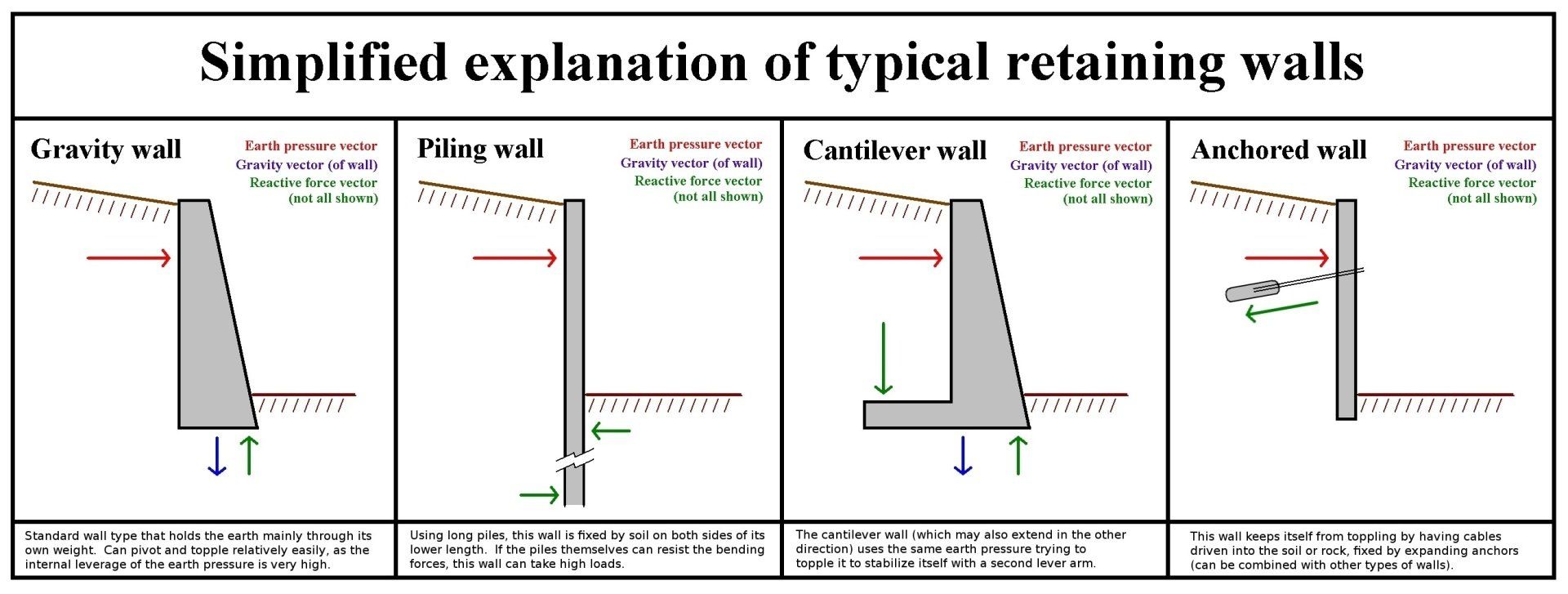The Most Common Types of Retaining Walls
Typical Retaining Walls

Retaining walls can be a gorgeous addition to a property, on top of helping prevent erosion of soil and making landscaping areas flatter for easier care. When a new retaining wall is needed, working with retaining wall contractors is a must to choose the right type and to have it installed properly. Read below to learn more about the different types before calling a contractor for help.
Cantilevered Retaining Wall
A cantilever retaining wall consists of a base slab with a stem rising vertically from it. The base is buried in the ground, with more of the slab underneath the soil behind the wall to help hold it in place. The back of the stem is then filled with earth to hold the wall in place and keep everything secure. This is a solid type of retaining wall and can be made with different materials to create a unique look.
Gravity Retaining Wall
The gravity retaining wall has a similar overall shape to a cantilever wall, but the base is much shorter, and the stem is a lot thicker. This allows it to use gravity to hold the soil in place and prevent movement. A segmental block retaining wall is often designed in this manner to look good but still provide the support needed to hold the soil in place. These can be used in residential or commercial settings.
Anchored Retaining Wall
The anchored retaining walls feature a shorter base and thicker stem but also have multiple anchors tied into place to hold the wall. This is a type of reinforced retaining wall when more strength is needed than the gravity walls. The anchors are placed from the front of the stem, through it, and into the soil behind the stem to help hold up the retaining wall better. When there is more pressure on the retaining wall, anchoring helps to keep it in place better and prevent potential failures.
Sheet Piling Retaining Wall
With sheet piling, a steel sheet of metal is pushed into the ground and held in place based on how much of it is below the ground. A steel retaining wall can, depending on the design, function as a wall and a retaining wall. There must be at least 1/3 of the metal below the soil to hold the wall in place and prevent potential issues, like failing prematurely. Various types of metal can be used depending on the desired look.
Choosing the Right Type
Whether it’s for foundation retaining walls or property owners looking into concrete retaining wall design, choosing the right type of wall is crucial. Depending on the amount of pressure from the soil, anchoring or other types of retaining wall reinforcement might be needed, so a corrugated metal retaining wall will work well in some places but not in others. At Pittsburgh Retaining Walls, we can help ensure the right type is chosen for the desired look and the weight of the soil.
Property owners looking into having a retaining wall installed on their property, no matter how large or small, will want to take time to talk to a
retaining wall engineer near me such as Pittsburgh Retaining Walls before making any decisions. Many different options exist for the main types of retaining walls, so there are plenty of choices to make before the design is finalized. Call Pittsburgh Retaining Walls today to learn more about what will work best for your property.
Request a Consultation
Contact Us
We will get back to you as soon as possible.
Please try again later.

